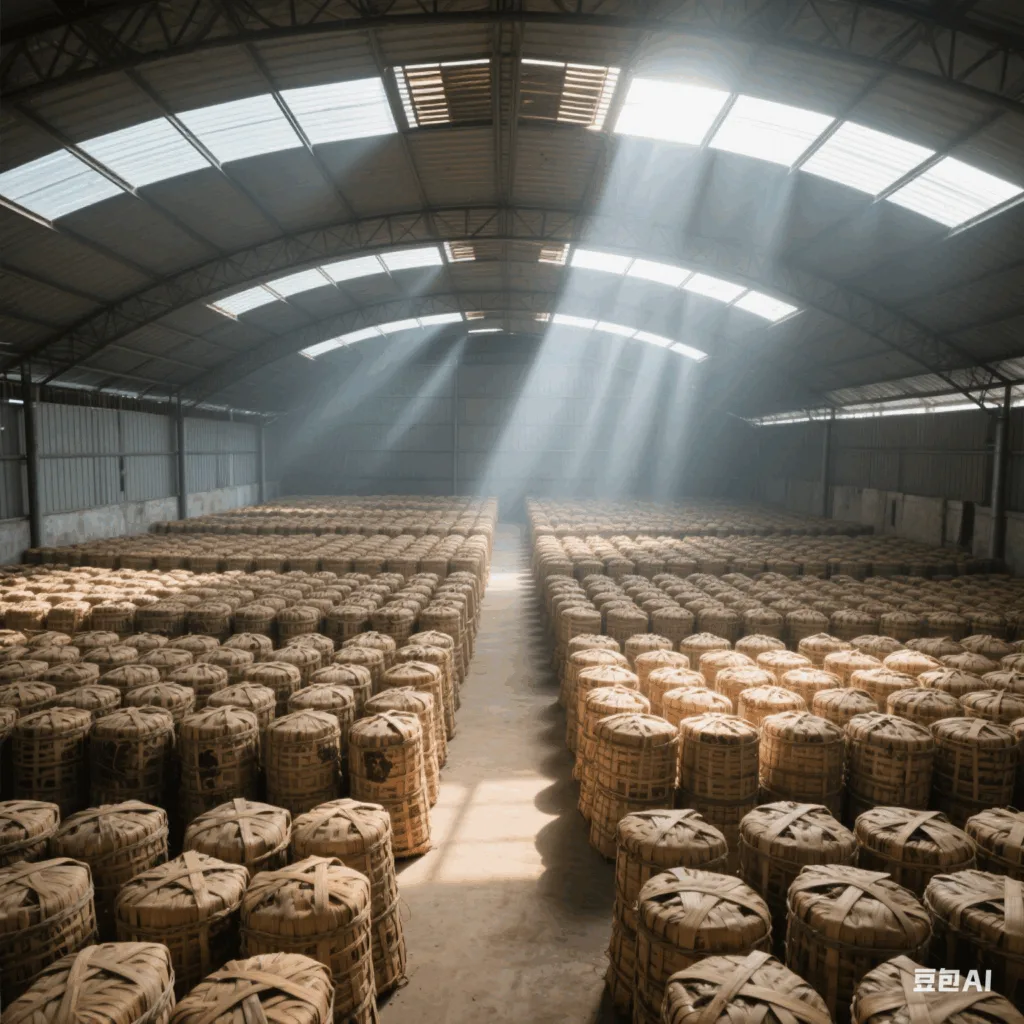Worldwide Free shipping for orders over $100 | Click Here To Subscribe to us for LATEST NEWS | Get 10% OFF "TEA10DIS"
The “Cellar-aged Aroma” of Guangxi Liu bao Tea
What is the Cellar-aged Aroma Of Liu Bao Tea
Liu Bao Tea from Guangxi is known for its mild tea nature, mellow and smooth taste. It can be brewed by infusing or steeping, and is great for relieving the sticky feeling during the hot and humid seasons as well as dispelling the cold in winter.
Regarding the flavor of Liubao Tea, those who love it are fond of it. However, many tea lovers who are new to Liubao Tea often find it hard to accept the so-called “cellar aroma” at first, which is reminiscent of the smell of an old house. Some even think this aroma indicates poor tea quality.
So, does the “cellar aroma” mean the tea is of bad quality?
The “cellar aroma” has several concepts:
The “cellar aroma” has several concepts:
- Warehouse-induced Aroma: Different storage environments, such as humid or dry conditions, and storage in warehouses made of different materials like bricks, stones, or wooden boards, can affect the storage state of the tea and produce various storage-related scents.
- Process – related Cellar Aroma: For example, after fermentation, Liubao Tea needs to be aged in a tea cellar or wooden – board warehouse for at least half a year. During this aging process, a unique cellar – aged aroma is produced.
- Region – specific Cellar Aroma: When Liubao Tea is stored in different regions, it will absorb the local environmental scents. For instance, there are the so – called “Guangdong – stored” and “Northern – stored” Liubao Tea.
- Wet – warehouse Aroma: Improper storage conditions like long – term exposure to high temperature and humidity can cause the tea to transform rapidly, become moldy, and spoil.
In fact, the “cellar aroma” of Liubao Tea belongs to the process – related cellar aroma, and its full name should be “cellar – aged flavor”. Because of the aging process, it is often accompanied by aged fragrance and charm.
Liubao Tea is considered better with age. Among all, the airing and aging (cellar – aging) process is the key to shaping its flavor. Without cellar – aging, there is no distinct Liubao Tea. Without this process, Liubao Tea would lose its unique flavor, profound heritage, and market recognition.
A joint study by COFCO Health Research Institute and China Tea Technology Co., Ltd. shows that before and after cellar aging, the content of more than 3,000 substances in Liubao Tea changes. There are over 500 active ingredients utilized by microorganisms during the pile fermentation process, such as Eurotium cristatum, phenolic acids, flavonoid glycosides, and other beneficial substances, whose contents are further increased during the cellar aging process.
Why does the cellar-aged aroma of Liu Bao Tea form?
Since Liubao Tea requires years of aging, its flavor is often shaped through combinations like storing one batch of tea in multiple warehouses or using different storage methods. Storage methods include dry-warehouse storage, cellar-aging, cave-storage, wooden-board-warehouse storage, pottery-storage, ice-storage, and wet-storage. These storage spaces are relatively less ventilated. Through long-term storage, the tea continuously absorbs and releases various scents, thus forming a certain cellar-aged aroma, which has become a characteristic flavor of traditional Liubao Tea.
Liu Bao Tea “Cellar-aged Aroma” ≠ “Wet-warehouse Aroma”
There is an essential difference between the two.
The essence of cellar aging is to scientifically manage Liubao Tea using controllable and standardized methods. It has requirements for the storage environment, storage method, and climate conditions of the storage location. Based on relevant professional experimental analysis and fermentation models, with the support of hardware facilities and software conditions that meet the needs of biological transformation and fermentation, an environment is created that is conducive to the growth of beneficial microbial flora for the aging of Liubao Tea. For example, the temperature and humidity are regulated, and factors such as the spatial structure, building materials, regional layout, and process management of the tea cellar are taken into consideration.
Therefore, the cellar – aged flavor actually results from the unique climate and small – scale ecological environment of beneficial microbial flora in Guangxi, as well as scientific and controllable storage methods. Although the temperature and humidity in different tea cellars vary, they are all within a reasonable and human – controllable range, which enhances the quality of the tea and represents a positive transformation.
On the contrary, the wet-warehouse aroma is the result of an uncontrolled high-temperature and high-humidity environment, which leads to the tea getting damp, spoiling, and becoming moldy, representing a negative transformation. If the cellar-aged tea has problems such as mold, a scratchy throat feeling, or astringency, it indicates unqualified cellar aging, which may be caused by improper storage environment or management, or insufficient aging time before leaving the cellar.
